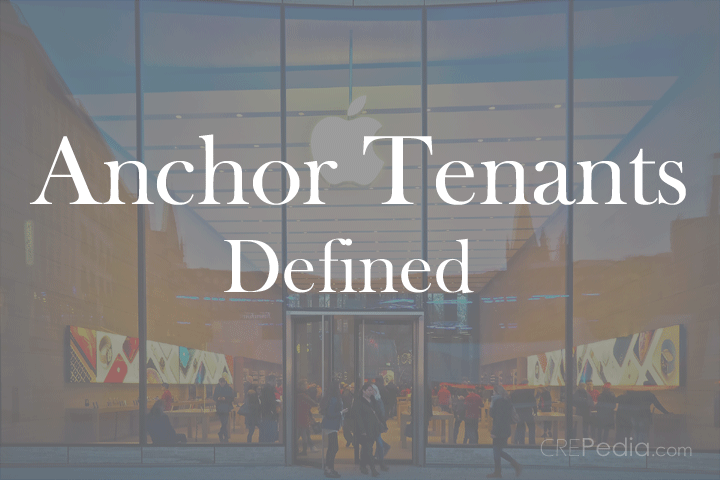What Is An Anchor Tenant?
In commercial real estate, an anchor tenant is an occupant of a retail shopping center that brings in a significant enough volume of customers to drive business for other tenants in that retail center. Surrounding stores become dependent on the anchor tenant's draw of customers that they could not otherwise attract on their own.

Examples of Anchor Tenants
Anchor tenants have traditionally consisted of large supermarkets or retail chain stores that attract large amounts of traffic. For example, adjacent large tract housing developments, you will often find a shopping center with a large supermarket such as Albertsons and a bank branch such as Bank Of America.
These anchor tenants will be surrounded by various smaller stores such as a dry cleaner or small restaurant. The supermarket is the anchor tenant that constantly brings in large numbers of people for their grocery shopping. This creates visibility and traffic that will also bring in business for the dry cleaner.
In the classic indoor mall, the large department stores such as Macy's or Nordstrom have been the anchor tenants. Between these large department stores are often various smaller apparel stores, restaurants, or hobby stores. Because department stores bring in large numbers of customers, they result in customer traffic to the businesses located between them so these smaller stores can achieve profitable sales volumes.
The Anchor Tenant's Leverage
Anchor tenants drive demand for space adjacent to them due to the resulting sales for neighboring businesses. This means the success or failure of a retail shopping center can depend on the landlord's ability to attract an anchor tenant.
Aware of the value of the traffic they draw, potential anchor tenants have traditionally used this leverage to negotiate rents that are not profitable for the property owner alone. They expect their landlords to make up for the losses with higher rents to the smaller tenants.
Cultural, social and technological changes have led to some disruption in the retail industry. The classical model of shopping center development is in evolution as shopping center developers assess what works, and what does not.
One of the consequences of this disruption is the leverage of the classical big box anchor tenants has diminished. Consumers buy online and smaller retailers such as Apple or Trader Joe's may be a primary driver of traffic that brings people out to the places where people shop, dine, and socialize.